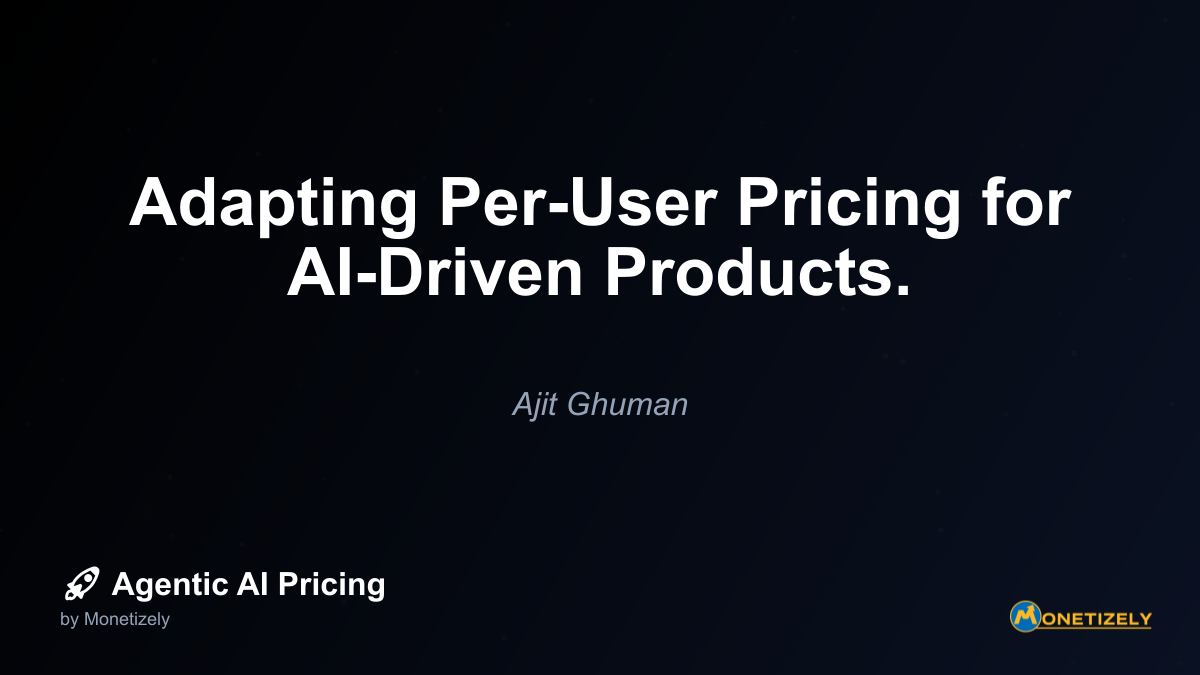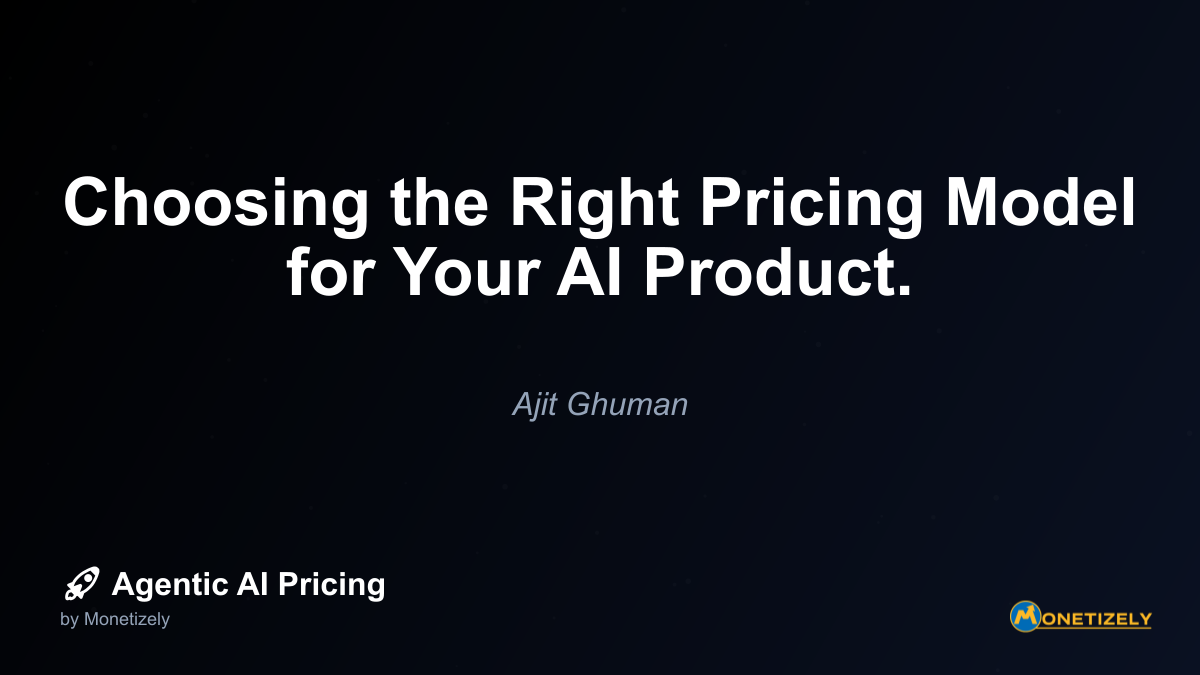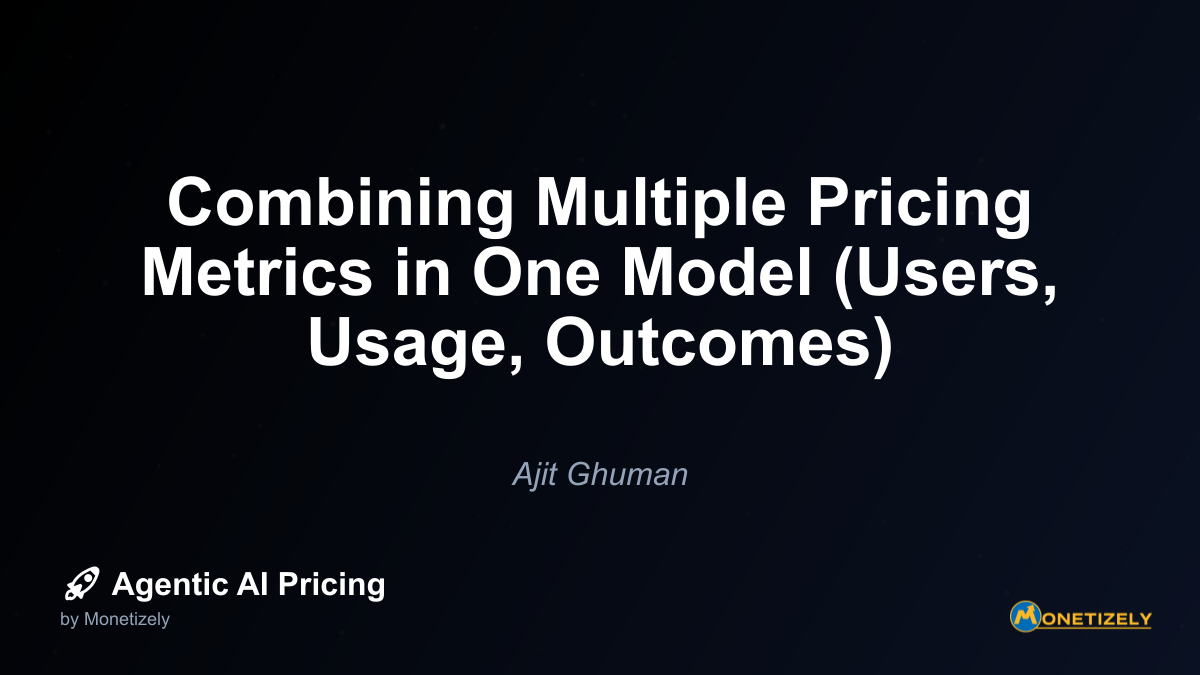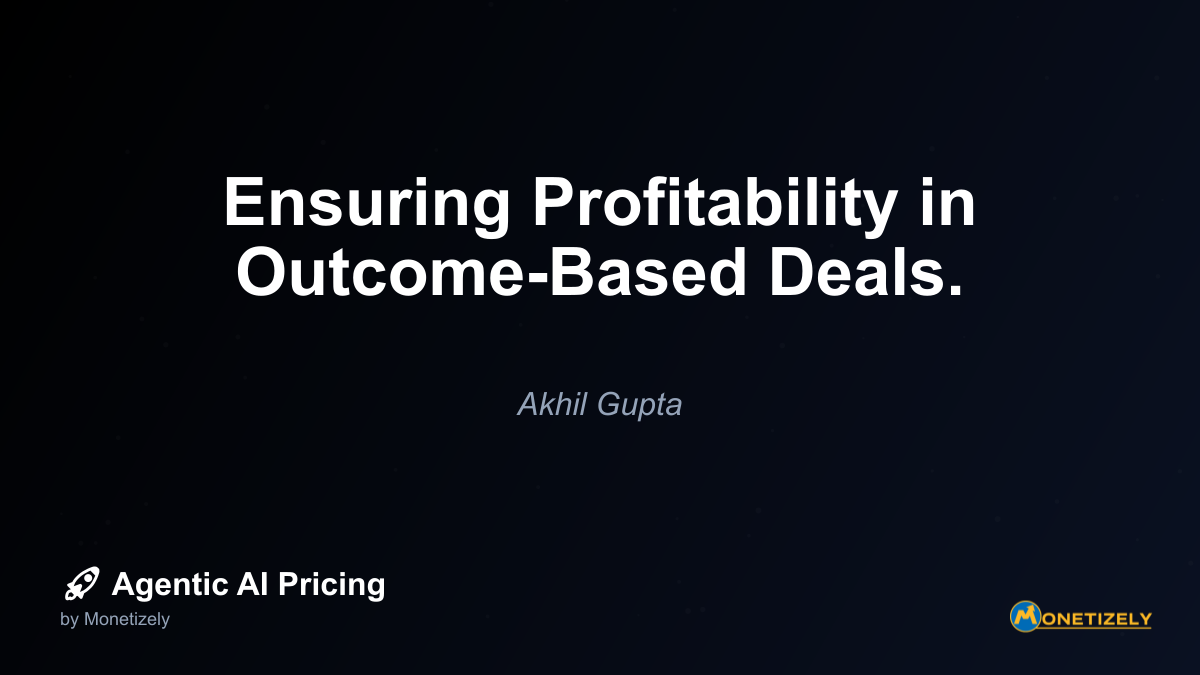· Akhil Gupta · Agentic AI Pricing Strategies · 11 min read
Pricing by Volume: Volume Discounts and Tiered Usage Plans.
AI and SaaS Pricing Masterclass
Learn the art of strategic pricing directly from industry experts. Our comprehensive course provides frameworks and methodologies for optimizing your pricing strategy in the evolving AI landscape. Earn a professional certification that can be imported directly to your LinkedIn profile.
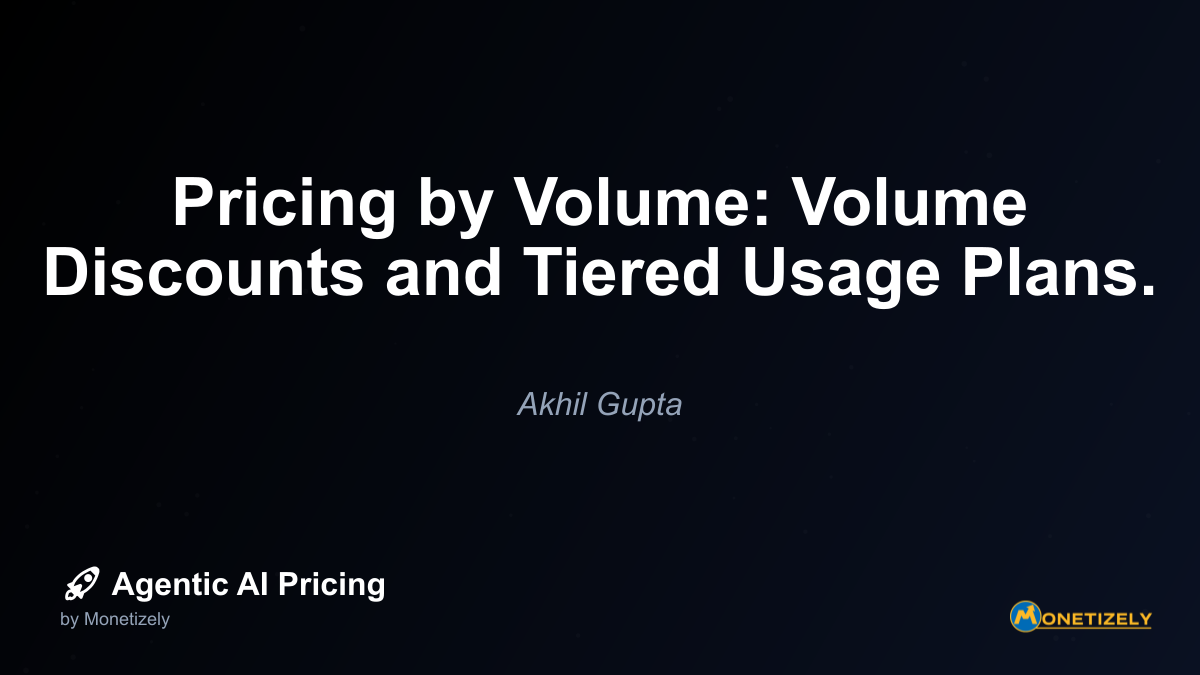
In the rapidly evolving landscape of agentic AI services, pricing strategies play a pivotal role in determining market adoption, customer satisfaction, and revenue optimization. Volume-based pricing models have emerged as particularly effective frameworks for AI service providers seeking to balance accessibility with profitability. These models recognize a fundamental economic principle: as usage scales, the marginal cost of serving each additional unit typically decreases, creating an opportunity to pass some of these efficiencies to customers while still maintaining healthy margins.
Understanding Volume-Based Pricing in the AI Context
Volume-based pricing is not a new concept in business, but its application to agentic AI services requires careful consideration of the unique cost structures and value propositions that characterize this technology. Unlike traditional software, where distribution costs approach zero, AI services involve ongoing computational expenses, data storage requirements, and potential API calls to external services.
At its core, volume-based pricing creates incentives for customers to increase their usage by offering more favorable economics at higher volumes. This approach aligns the interests of both the service provider and the customer: providers achieve greater predictability in revenue and resource allocation, while customers benefit from improved unit economics as they scale.
Common Volume-Based Pricing Models for AI Services
Quantity-Based Discounts
The most straightforward implementation of volume pricing offers direct discounts based on quantity purchased or consumed. For agentic AI services, this might manifest as:
- Per-query discounts: As customers exceed certain thresholds of AI queries (e.g., 10,000, 100,000, or 1,000,000 queries per month), the per-query price decreases.
- Token-based discounting: For generative AI services that measure usage in tokens, providers may offer reduced per-token rates at higher volumes.
- Compute-time discounts: For AI services that bill based on computational resources consumed, discounts can apply as usage increases.
For example, an AI document analysis service might charge $0.05 per page for the first 1,000 pages processed monthly, $0.04 per page for the next 5,000 pages, and $0.03 per page for all usage beyond that threshold.
Tiered Usage Plans
Tiered plans package different volume levels into distinct subscription tiers, often with additional features or capabilities unlocked at higher tiers. This approach is particularly effective for agentic AI services where different customer segments have predictable usage patterns.
A typical tiered structure might include:
- Starter tier: Limited monthly usage (e.g., 1,000 AI interactions) at a higher per-unit cost
- Professional tier: Moderate usage (e.g., 10,000 AI interactions) at a reduced per-unit cost
- Enterprise tier: High-volume usage (e.g., 100,000+ AI interactions) at the lowest per-unit cost
These tiers often include additional value differentiators beyond raw usage, such as priority API access, enhanced support, or exclusive features.
Commitment-Based Volume Discounts
Some AI service providers offer significant discounts in exchange for usage commitments. This approach, popularized by cloud providers like AWS and Google Cloud, has found natural application in the agentic AI space.
Under this model, customers commit to a minimum level of usage over a specified period (typically 1-3 years) in exchange for discounted rates. For example, an AI provider might offer a 30% discount on standard rates for customers who commit to spending at least $100,000 annually on their service.
The Economic Rationale Behind Volume Pricing for AI Services
Volume-based pricing models are not merely marketing tactics; they reflect fundamental economic realities of AI service delivery. Several factors make these models particularly appropriate for agentic AI offerings:
Decreasing Marginal Costs
As AI services scale, several cost components become more efficient:
- Infrastructure utilization: Higher volumes allow for better utilization of underlying compute resources, reducing idle capacity.
- Amortization of fixed costs: Development, maintenance, and operational overhead can be spread across more usage units.
- Batch processing efficiencies: Many AI operations can be optimized when processed in larger batches.
Predictability Benefits
Volume commitments provide valuable predictability for AI service providers:
- Resource planning: Knowing expected usage volumes allows for more efficient capacity planning.
- Revenue forecasting: Committed usage translates to predictable revenue streams.
- Investment justification: Guaranteed usage levels can justify investments in service improvements.
Network Effects and Data Advantages
Many AI services improve with scale due to:
- Model refinement: More usage generates more training data, potentially improving model performance.
- Broader use cases: Diverse usage patterns help identify new applications and optimization opportunities.
- Ecosystem development: Higher adoption encourages complementary services and integrations.
Implementing Effective Volume Pricing for AI Services
Creating a successful volume-based pricing strategy requires careful consideration of several factors:
Determining Volume Thresholds
Setting appropriate volume thresholds is critical to the success of any tiered or discount-based pricing model. Thresholds that are too low might leave money on the table, while thresholds that are too high may fail to incentivize increased usage.
Effective threshold determination typically involves:
- Cost analysis: Understanding how your marginal costs decrease with scale
- Customer segmentation: Identifying natural usage patterns among different customer groups
- Competitive benchmarking: Examining how similar services structure their volume pricing
- Value-based considerations: Assessing how the perceived value of your service changes at different usage levels
For instance, an AI-powered content generation service might analyze usage patterns and discover that small businesses typically need 5,000-10,000 words monthly, while mid-sized marketing agencies require 50,000-100,000 words. Setting volume thresholds at 10,000, 50,000, and 100,000 words would create natural upgrade paths aligned with customer segments.
Discount Structure Design
Once thresholds are established, determining the appropriate discount at each level requires balancing revenue optimization with customer incentives. Common approaches include:
- Linear discounting: Consistent percentage reductions at each tier (e.g., 10% discount at tier 2, 20% at tier 3)
- Accelerating discounts: Larger percentage reductions at higher tiers to strongly incentivize scale
- Decelerating discounts: Larger initial discounts that taper off at higher tiers
The right approach depends on your cost structure and business objectives. Services with high fixed costs and low marginal costs may offer steeper discounts at higher volumes, while services with significant variable costs might use more conservative discount structures.
Communicating Value at Scale
Effective volume pricing isn’t just about the numbers—it’s about communicating the value proposition to customers. This includes:
- Transparent pricing pages: Clearly illustrating how unit economics improve with scale
- ROI calculators: Helping customers understand the business case for increased usage
- Case studies: Showcasing how similar customers have benefited from volume-based pricing
Case Studies: Successful Volume Pricing in Agentic AI
OpenAI’s API Pricing Evolution
OpenAI’s pricing for its GPT models demonstrates the application of volume-based pricing in the generative AI space. Initially, the company charged a flat rate per 1,000 tokens. However, as the service scaled and their models evolved, they introduced more sophisticated volume pricing:
- Input vs. output differentiation: Charging different rates for input tokens (what users send) versus output tokens (what the AI generates)
- Model-specific pricing tiers: Different rates based on model capability and computational requirements
- Volume discounts: Reduced per-token rates for high-volume customers
This approach has allowed OpenAI to serve both casual developers and enterprise customers with appropriately scaled economics.
Anthropic’s Claude API Pricing
Anthropic has implemented a volume-based pricing strategy for its Claude AI assistant that rewards higher usage with better economics. Their model includes:
- Context window considerations: Pricing that accounts for both the size of the context window and the volume of interactions
- Enterprise volume commitments: Significant discounts for organizations willing to commit to minimum usage levels
- Graduated discounting: Progressively better rates as usage increases across defined thresholds
Vertical-Specific AI Services
Beyond the major generative AI platforms, many vertical-specific AI services have successfully implemented volume pricing:
- AI-powered legal document review: Services charging per document with significant volume discounts to capture large corporate clients
- Medical imaging analysis: Platforms offering tiered pricing based on the number of images processed monthly
- Customer service AI: Solutions with pricing tied to conversation volume, with decreasing per-conversation costs at scale
The Strategic Benefits of Volume Pricing for AI Providers
Beyond the immediate revenue implications, volume-based pricing offers several strategic advantages for AI service providers:
Customer Growth Alignment
Volume pricing naturally aligns the AI provider’s interests with customer success. As customers grow their usage—often indicating business growth or successful AI integration—both parties benefit economically. This creates a virtuous cycle where the provider is incentivized to help customers extract maximum value from the service.
Competitive Positioning
In competitive markets, volume pricing can serve as an effective differentiation strategy. By offering more favorable economics at scale, providers can:
- Win large accounts: Attract enterprise customers with volume-sensitive budgets
- Increase switching costs: Once customers build high-volume workflows around a service, the economic advantages make switching less appealing
- Signal confidence: Aggressive volume discounts signal confidence in service quality and cost structure
Market Expansion
Volume pricing can help AI providers expand their addressable market by:
- Capturing price-sensitive segments: Making services accessible to cost-conscious customers who can start small
- Encouraging experimentation: Lower entry-level pricing reduces barriers to initial adoption
- Enabling new use cases: As unit economics improve with scale, previously uneconomical use cases become viable
Challenges and Considerations in Volume-Based AI Pricing
While volume pricing offers many advantages, it also presents challenges that require careful navigation:
Revenue Dilution Risk
Poorly designed volume discounts can lead to revenue dilution if discounts are too aggressive or thresholds are set too low. To mitigate this risk:
- Model different scenarios: Analyze how various discount structures would affect revenue if applied to current usage patterns
- Implement grandfathering policies: Consider maintaining existing rates for current customers while applying new structures to new customers
- Use time-limited promotions: Test volume discount approaches through limited-time offers before permanent implementation
Cost Forecasting Accuracy
Volume pricing assumes predictable cost structures as usage scales. However, AI services may encounter unexpected cost increases due to:
- Model retraining requirements: Higher volumes might necessitate more frequent model updates
- Infrastructure scaling challenges: Some components may not scale linearly with usage
- Support and operations complexity: Large-volume customers often require more sophisticated support
Maintaining accurate cost forecasting is essential to ensure volume discounts remain profitable.
Customer Education Challenges
Complex volume pricing can create confusion among potential customers. Successful implementation requires:
- Simplified communication: Clear, accessible explanations of how volume pricing works
- Usage visibility: Tools that help customers monitor their usage and understand which tier they’re in
- Predictable billing: Avoiding surprise charges when customers cross thresholds
Future Trends in AI Volume Pricing
As the agentic AI market matures, several emerging trends in volume pricing are worth monitoring:
Hybrid Pricing Models
Many AI providers are moving beyond simple volume discounts to implement hybrid models that combine multiple pricing dimensions:
- Volume + outcome-based components: Discounts based on both usage volume and measurable outcomes
- Volume + feature differentiation: Different volume discount structures for basic versus premium features
- Volume + time commitment: Enhanced discounts for customers willing to commit to both minimum volumes and contract durations
Dynamic Volume Pricing
Advancements in pricing technology are enabling more sophisticated approaches:
- Real-time discount adjustments: Automatically optimizing discounts based on current system capacity
- Predictive usage pricing: Offering personalized volume discounts based on predicted future usage
- Collaborative pricing: Volume benefits that accrue across multiple customers in a partner ecosystem
Sustainable AI Pricing
As energy consumption and environmental impact become more important considerations, volume pricing may evolve to incorporate sustainability factors:
- Efficiency incentives: Better rates for workloads optimized to minimize computational resources
- Off-peak discounts: Volume discounts enhanced during periods of lower overall system utilization
- Carbon-aware pricing: Volume discounts tied to the carbon intensity of the energy used for computation
Implementation Best Practices for AI Service Providers
For AI service providers looking to implement or optimize volume-based pricing, several best practices can increase the likelihood of success:
Data-Driven Approach
Effective volume pricing requires robust data analysis:
- Usage pattern analysis: Understanding how different customer segments consume your service
- Cost attribution: Accurately mapping costs to usage to ensure profitability at each tier
- Price sensitivity testing: Experimenting with different thresholds and discount levels
Gradual Implementation
Rather than making dramatic pricing changes, consider a phased approach:
- Introduce volume discounts for new customers only
- Offer existing customers the option to opt into new structures
- Gradually transition all customers to the optimized model
This approach minimizes disruption while allowing for refinement based on market feedback.
Continuous Optimization
Volume pricing should evolve with your service and market:
- Regular threshold reviews: Assessing whether volume thresholds remain appropriate as your customer base grows
- Competitive monitoring: Tracking how competitors’ volume pricing strategies evolve
- Customer feedback loops: Soliciting input from customers about pricing structure clarity and incentive effectiveness
Conclusion
Volume-based pricing represents a powerful strategy for agentic AI service providers seeking to balance accessibility, profitability, and growth incentives. By offering improved economics as usage scales, these models create alignment between providers and customers while reflecting the underlying cost efficiencies of AI service delivery.
As the AI service landscape continues to mature, we can expect volume pricing strategies to become increasingly sophisticated, incorporating multiple dimensions beyond simple quantity discounts. Providers who master the art and science of volume pricing will be well-positioned to capture market share while maintaining sustainable economics.
For businesses implementing or consuming AI services, understanding the nuances of volume pricing is essential to making informed decisions about service selection, usage patterns, and budget allocation. By recognizing how these models work and the value they can deliver at scale, organizations can maximize the return on their AI investments while building sustainable partnerships with service providers.
Co-Founder & COO
Akhil is an Engineering leader with over 16+ years of experience in building, managing and scaling web-scale, high throughput enterprise applications and teams. He has worked with and led technology teams at FabAlley, BuildSupply and Healthians. He is a graduate from Delhi College of Engineering and UC Berkeley certified CTO.
Pricing Strategy Audit
Let our experts analyze your current pricing strategy and identify opportunities for improvement. Our data-driven assessment will help you unlock untapped revenue potential and optimize your AI pricing approach.

